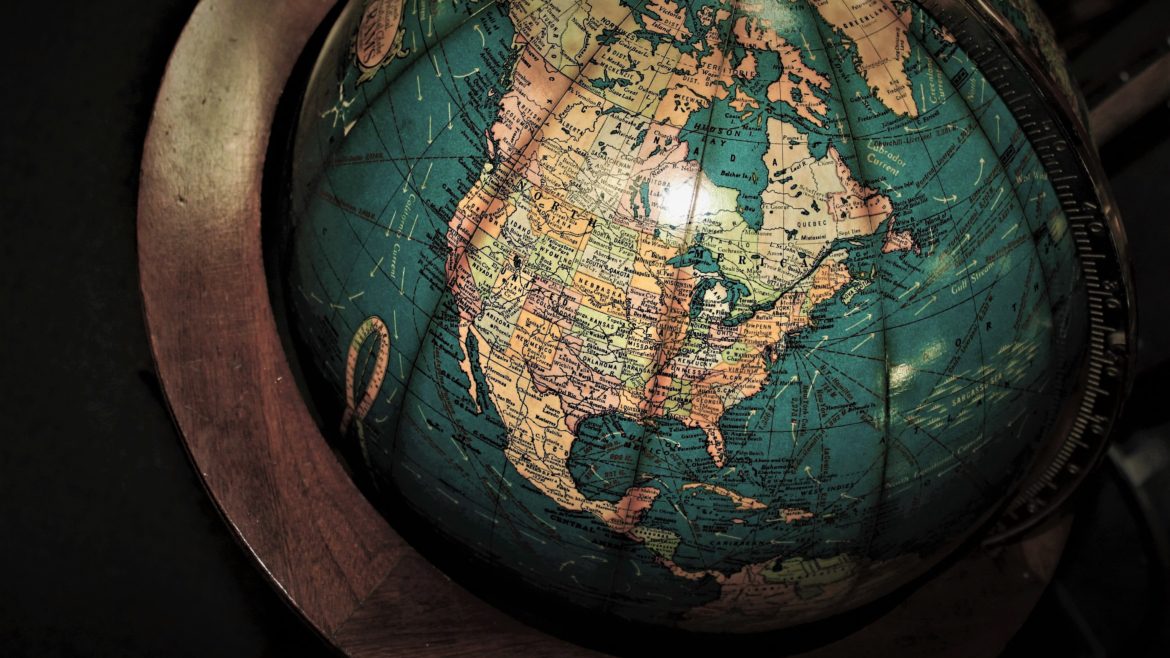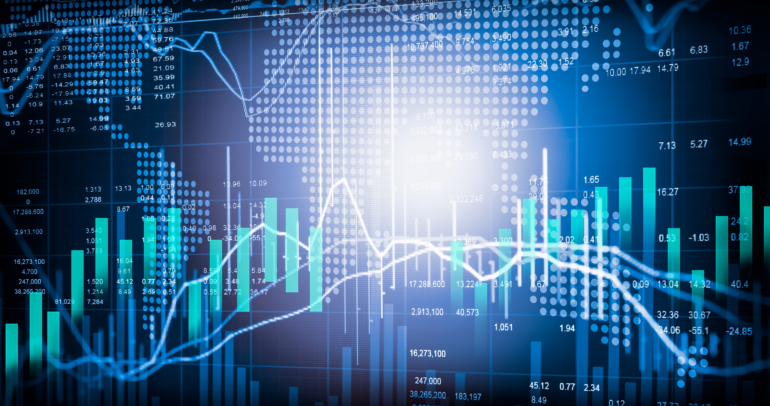World trade as an indication of the force of globalization.
Since 1983, the trading volume, which is measured based on mer-chandise, has increased over eight fold from $1.84 trillion to $17.2 tril-lion in 2017. China is by far the largest exporter on a global scale and has been a member of the World Trade Organization (WTO) since 2001. During this time, they have since experienced a real boom and are responsible for approximately 13.2% of all merchandise exports with the United States coming in a close second with 9.0% and Ger-many with 8.4%. These countries complete the trio as the top of ex-porters globally. On the import side, the same dynamic still stands with United States leading with a share of 13.7% China 10.5%, and Germany 6.6%.

The dynamic development is reflected in the Gross National Product of Economies in the world trade. The economy of the United States and the European Union was dominant until the early of 2000s. To-gether, they were responsible for about 60% of economic output (GDP). With the rise of China, their share fell in 2017 to approxi-mately 45%. As mentioned previously, this shift occurred due to their inclusion in the WTO in 2001. A benchmark against India shows how systemati-cally China is adhering to its current strategy. In 1982, both countries were in a similar starting po-sition each contributing just under 2% to the global economic performance. In 2017, India was able to roughly maintain its share of the global GDP, while China now has a share of 15%. (*2)

China has therefore become a prime example of an emerging economy. With this in mind, can we expect a saturation in the growth rates of the global GDP? A glimpse at a more detailed indica-tor gives an idea of the further course. The GDP per capita” measures the economic performance of an economy per capita. For the European Un-ion, the GDP per capita is USD 32,935. For the USA, the value is USD 57,831; Switzerland is one of the global leaders with a value of USD 81,110. China has a GDP per capita of USD 8,309. China will make the leap to the developed economies and attain a value of around 15,000 – 20,000 USD in the near future.
This would mean a further doubling of the current economic performance hereby leading to the in-crease of Chinas share of global GDP to approxi-mately 25% – 30%. China has long been an im-portant part of the transformation of the globalized world economy. (*1)
Order in the global cooperation
According to its definition, globalization describes the increasing worldwide interdependence of poli-tics, culture, economy and the environment. How-ever at first glance, globalization is often linked to the economic integration of national economies. Most conspicuously, a political consensus is a prerequisite for economic integration. In other words, an agreement on standards and rules that serve as a basis for the international interdepend-ence of trade in services and goods.
The World Trade Organization (WTO), founded in 1994 and with its headquarters in Geneva, is, alongside the International Monetary Fund (IMF) and the World Bank, the central international or-ganization that forms the framework for interna-tional trade. This agreement is based on the prin-ciples of international trade, which was derived from the General Agreement on Tariffs, and Trade (GATT).
The member states of the WTO today cover about 98% of the world trade lumen. In addition to the rules and regulations of these supranational or-ganizations such as the WTO and the IMF, bilat-eral and multilateral free trade agreements be-tween states or communities of states often regu-late the conditions for the implementation of trade relations.
The European Union conducts these trade agree-ments on behalf of its Member States. An exam-ple of such a trade is the agreement between the Swiss Confederation and the European Union (EU), which was concluded in 1972 with the aim of deepening economic relation which has since been adapted five times and is now valid in the version dated 30.3.2005.
These agreements govern, for example, import duties or groups of goods for which reduced or no duties apply. Furthermore, import restrictions are also defined in the agreements. Raw materials, agricultural products and technology products are often regulated by specific rules and regulations or entirely by agreement.
The European Union is by far the largest econ-omy, «contractually» that has been created and a good example of economic and political integra-tion with its 28 Member States.
Wealth transfer
Globalization has led to the internationalization of value creation chains. The expression of the ex-tended workbench shaped the picture when labor-intensive production steps were shifted from the industrialized countries to low-wage countries. The initial purpose of the global division of labor was to produce goods favorably for the markets in the industrialized countries. It was only at the end of the 1990s when the so-called tiger states (South Korea, Taiwan, Hong Kong and Singa-pore) mastered the leap from developing coun-tries to industrialized nations, that the awareness changed. The growing middle class in these coun-tries suddenly had purchasing power and their own consumer desires, so that new markets and market opportunities arose for the industrial na-tions. Today, China is considered the market of the future with the most potential as mentioned previously. With that in mind, companies have long since aligned themselves with the region. The global players are characterized by the fact that they offer their goods and services around the globe and align their specifications with their target markets.
It therefore seems only logical that with corre-spondingly large target markets, production is also carried out locally.
The power of the global player
Global players generate a large part of their sales outside their home market. The big technology values Google, Apple, Amazon, Microsoft and Fa-cebook are on everyone’s lips. Nevertheless, it is also a fact that of the 30 DAX companies, 28 gen-erate more than 50% of their sales abroad. The Volkswagen Group is a good example of a global player. In 2017, the Group employed 642,300 people worldwide, 44.9% of whom worked in Ger-many. 23.7% of all vehicles manufactured in the Group were produced in Germany, but of the 10 million vehicles delivered, only 1.1 million were sold in the domestic market. (*3).
Globally operating corporations are confronted with numerous national interests. The scandal of the exhaust gas emissions made this clear to the Wolfsburg car manufacturer. While in the USA, the Group incurred high claims for damages and the rescission of purchase contracts costing bil-lions. However, in Germany and Europe the ver-dict was relatively moderate. Other examples in-clude the 4.3 billion euro fine imposed by the Eu-ropean Union on Google for abuse of its own mar-ket power. Furthermore, the tax planning possibili-ties of globally positioned companies are of great concern to the national tax authorities. Companies redirect a large part of their profits in such a way that they are generated in a unit that is subject to a favorable tax regime.
A trade dispute cannot stop the globali-zation
Differing interests often accompany the potential for conflict between global players and national in-terests between states. Ultimately, economies compete with each other. It is true that industrial-ized countries are suffering from the relocation of production facilities and thus jobs to low-wage countries. On the other hand, this process takes pressure off inflation rates, thus causing low prices or only moderate price increases in the in-dustrialized countries. This also applies to the la-bor factor. The picture is reversed in the “low-wage countries”. The labor factor is in high de-mand and, as a result, wage increases should have a wealth effect in these countries. A transfer of wealth is thus taking place via the global labor market, which in the end will eventually lead to more demand for goods and services. Now there are always both positive and negative examples of such a process. Today, Germany is regarded as a winner of the European Monetary Union (EMU). After the introduction of the euro as the common currency, however, Germany initially had a massive locational disadvantage. The high costs associated with running a company within Germany led to massive job losses and transfers to low wage countries. The economic growth in Germany at the beginning of the 2000s was far below the EMU average.

In addition to the high unemployment rate caused by this, the high interest rate level in the Eurozone impeded the recovery of the economy. The re-forms initiated by Agenda 2010, the moderate wage demands and falling interest rates over the years, subsequently revitalized the German econ-omy. Today, Germany is clearly regarded as a beneficiary of the common economic area.
Another example is China. China’s economic rise has cost many jobs in the industrialized coun-tries. However, the transfer of wealth also en-sured that China is now one of the largest mar-kets for the products of the “old” industrialized countries. The development of global economic performance demonstrates that the pie has be-come larger thanks to globalization. Obviously, it should not be overlooked that there are also neg-ative connotations to globalization.
Many emerging countries suffer from strong de-pendence on foreign investment and often from high foreign debt. Hence limiting the ability to close the gap with industrialized countries. One of the biggest losers of globalization is the environ-ment. The burgeoning prosperity is leading to a sharp increase in the consumption of resources and increased emissions of harmful greenhouse gases. There is no doubt – there is a need for ac-tion here. However, this can only be done with the consensus of all parties involved. To achieve this, institutions such as the WTO and the IMF were founded at the time and the Memorandum of Un-derstanding on Limiting Man-made Global Warm-ing was concluded at the UN Climate Conference in Paris. A policy of isolation geared to national in-terests of foreclosure seems to be the wrong way forward.
The dismantling of trade barriers and the opening of markets have led to a sustained economic up-swing, low inflation figures and greater prosperity. The introduction of punitive tariffs and the ques-tioning of supranational institutions and agree-ments, as currently practiced by US President Donald Trump, have the opposite effect. It is time to find a common policy to curtail negative as-pects of globalization, especially environmental degradation, are limited above all.
SOURCE:
(* 1) = WTO; (* 2) = WORLD BANK; (* 3) = ANNUAL REPORT OF VOLKSWAGEN AG



